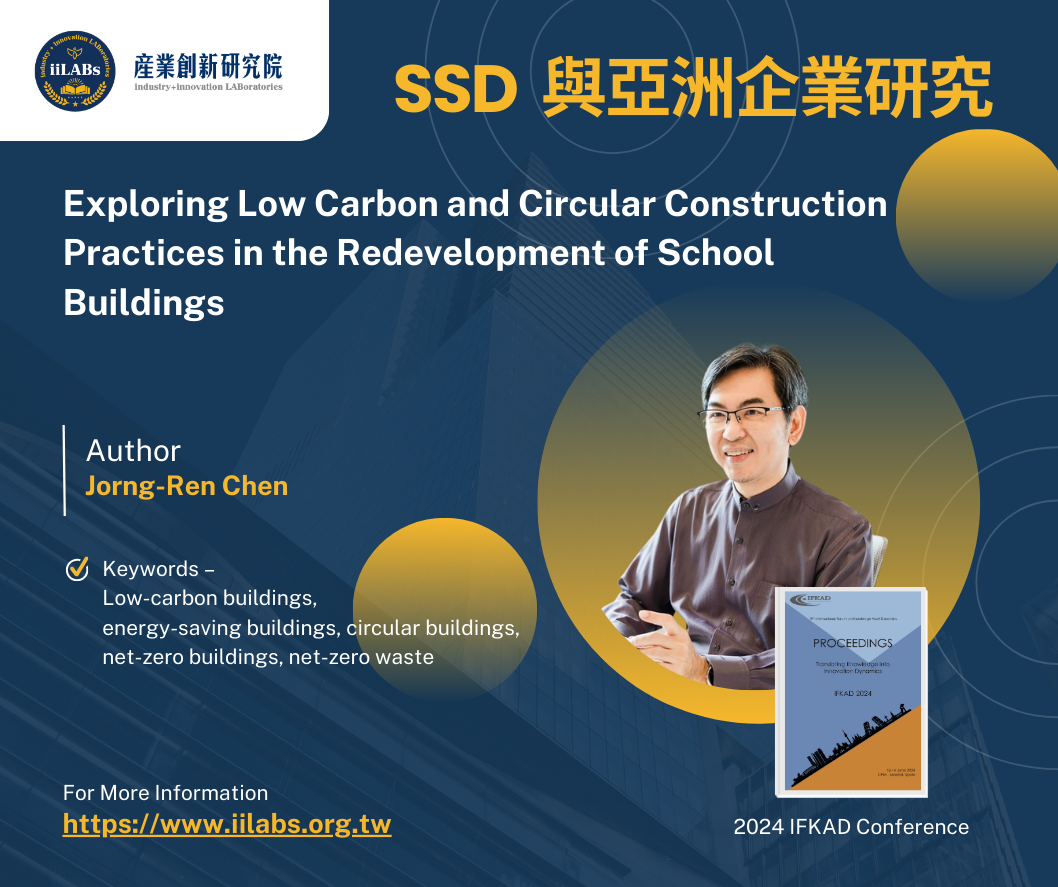


📙論文名稱:
Exploring Low Carbon and Circular Construction Practices in the Redevelopment of School Buildings
📙刊登處:2024 IFKAD國際學術研討會
📙作者姓名: Jorng-Ren Chen
論文摘要:
Net-zero carbon emissions in 2050 is an important milestone in the global response to climate change. The building industry accounts for about 40% of global carbon emissions, including emissions from the total building life cycle: Operational Carbon and Embodied Carbon. The United Nations Conference of the Parties (COP28) also called for tripling renewable energy capacity and doubling energy efficiency improvements by 2030.
Taiwan's schools are facing the impact of childlessness and the structural safety of old school buildings. Many school buildings will need to be completely or partially demolished and rebuilt into new school buildings that are more suitable for future use in terms of scale and function, which will become safer, more energy-efficient, healthier, more environmentally friendly, and lower-carbon green buildings, or even achieve net-zero emissions.
Therefore, when rebuilding these school buildings, the following principles must be considered: 1. deep energy-saving design, 2. use of renewable energy, 3. use of low-carbon building materials and construction methods, 4. use recycled building materials made from construction waste, 5. lightweight structural design, and 6. recycling of demolition and construction waste as much as possible. To achieve more than 50% energy savings, a more than 50% renewable energy substitution rate, a more than 30% reduction of embodied carbon, and a more than 90% recycling rate of construction waste, accelerating the school buildings to achieve the purpose of net-zero emission and circular construction.